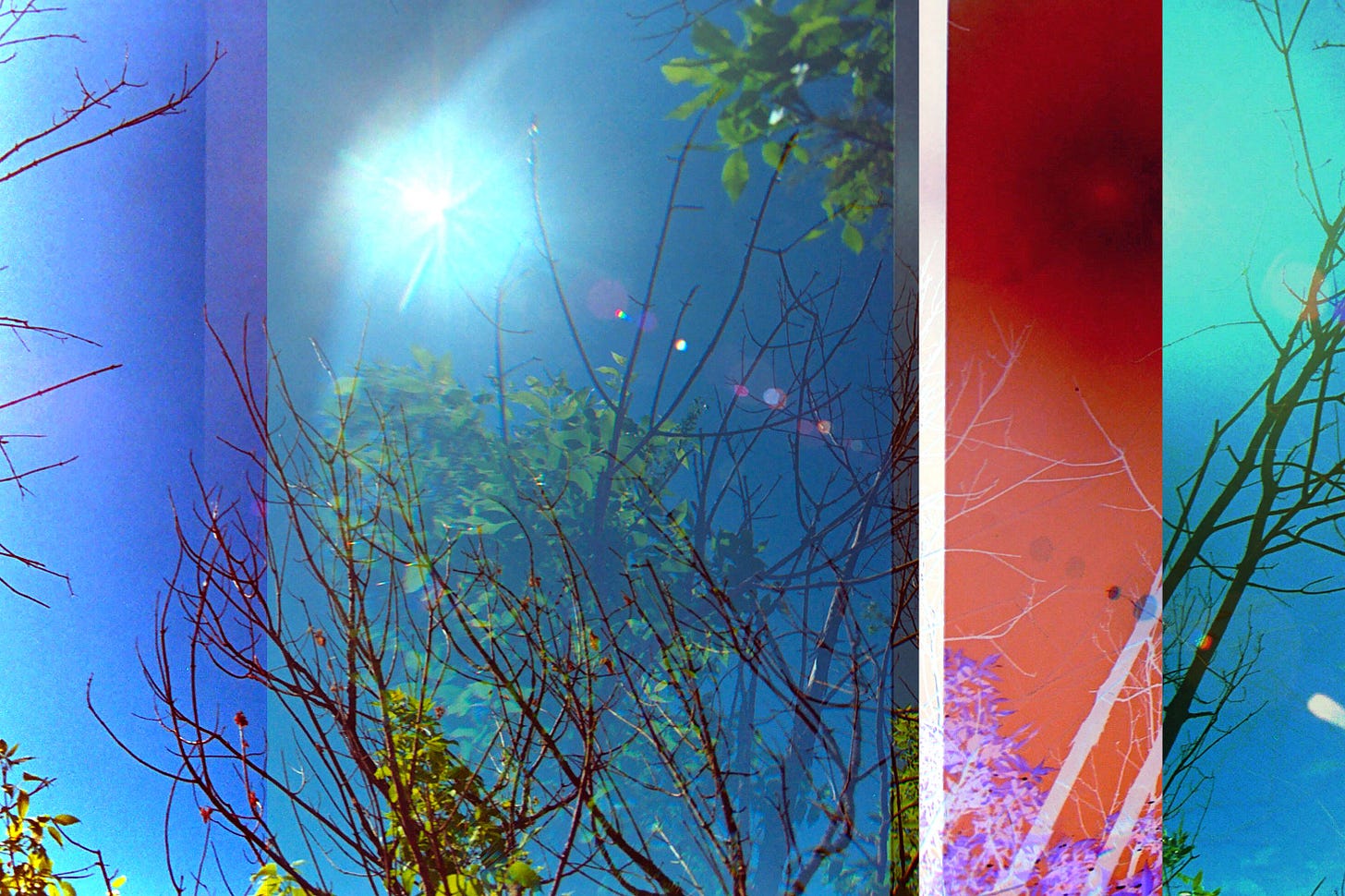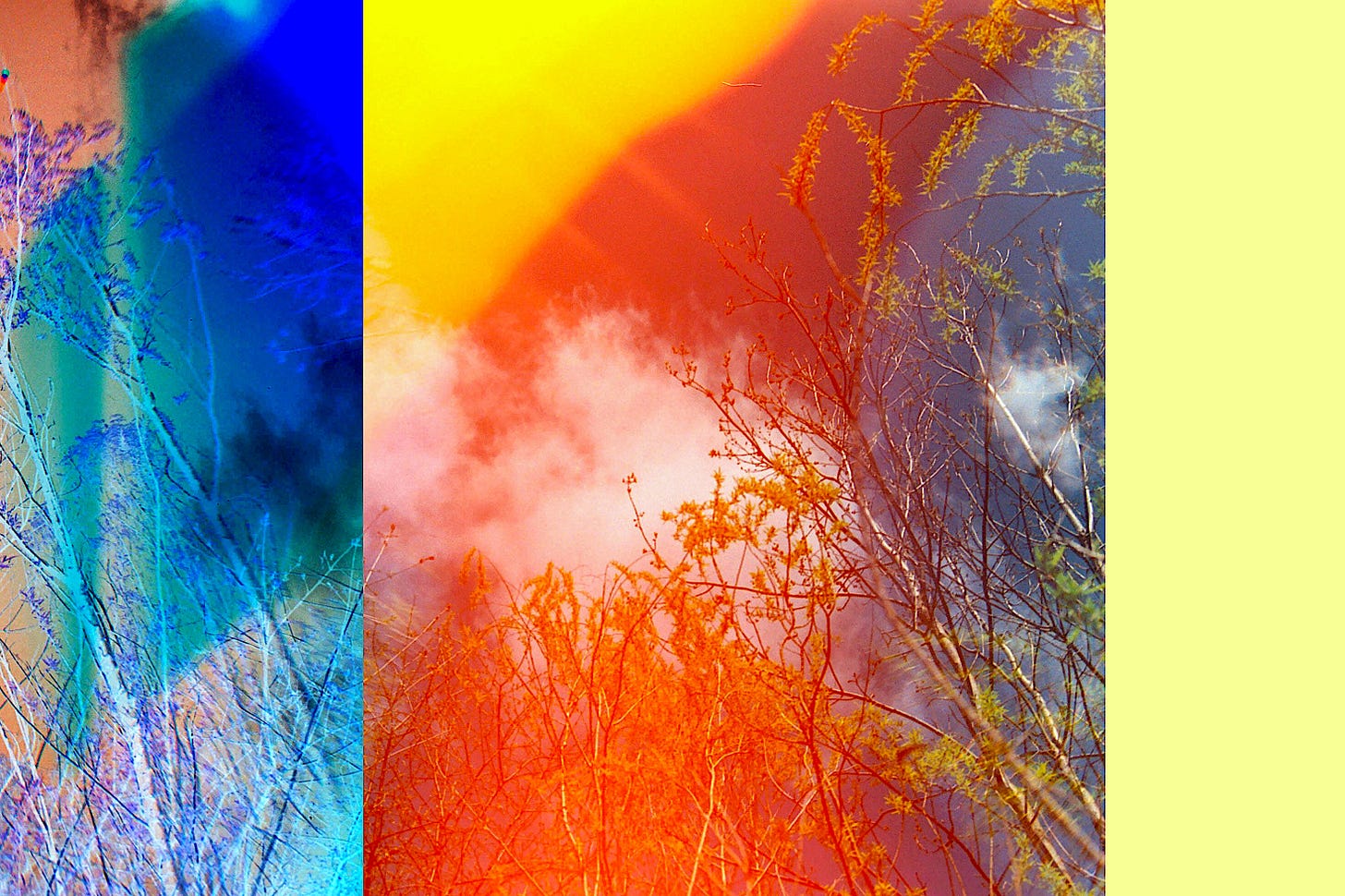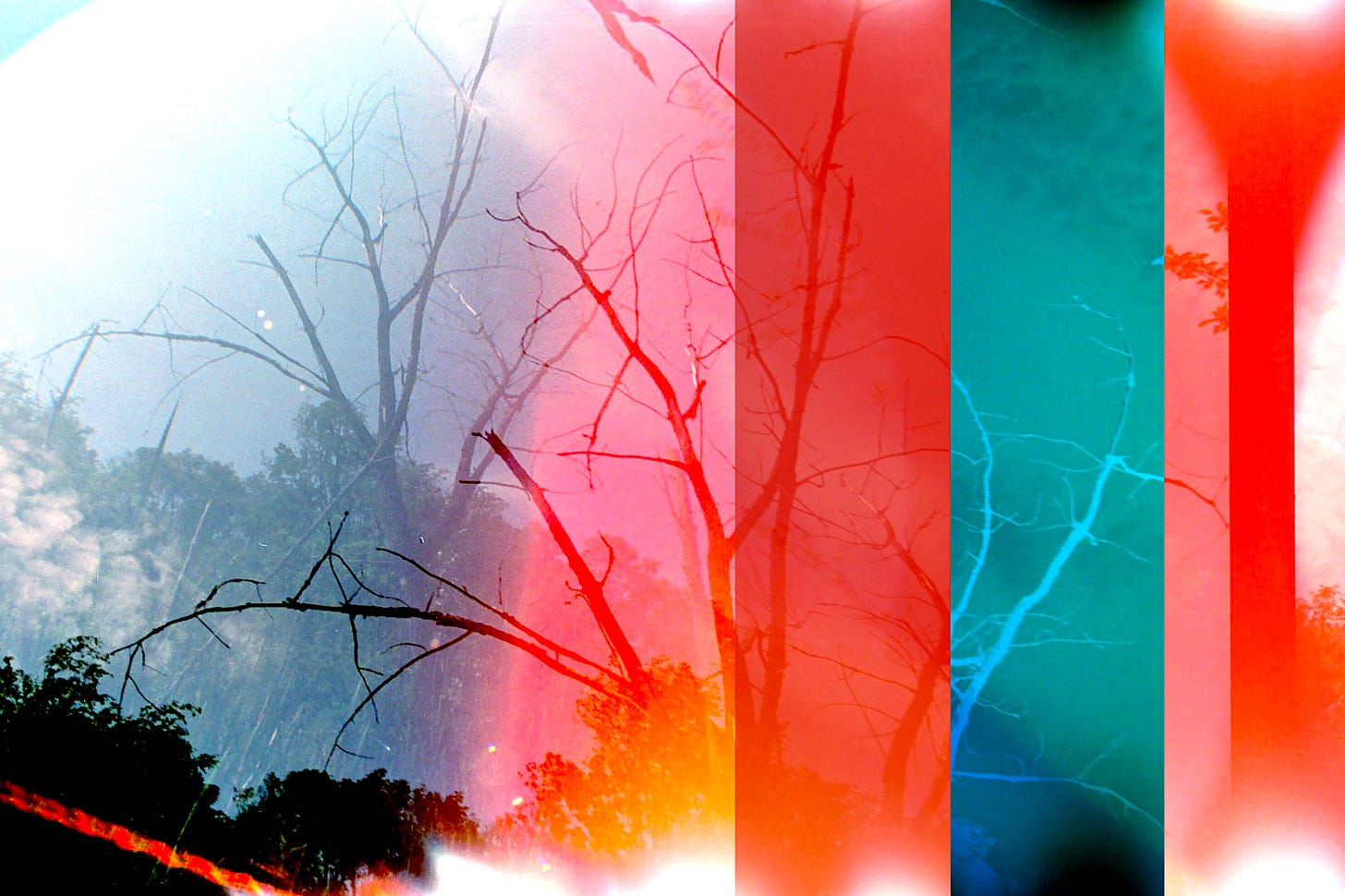The Primal Prism
NEW PHOTOGRAPHS BY LEAH OATES

As soon as new technologies take hold in the popular imagination, they begin to progressively dominate our passive expectations. It’s nearly impossible these days to imagine that a certain level of achievement in any professional discipline can be achieved without the use of digital technology, like Photoshop, Green Screen, or Artificial Intelligence. Yet the new technologies never completely replace (or erase) the old ones. They merely add a further layer of expertise for those who desire to attain it. They may transform expectations but they do not alter actual reality, nor do they stop artists everywhere from following their essential creative paths.
For the photographer Leah Oates there has always been a direct relationship with her subject matter and the process she has progressively reinterpreted to showcase it. Her work addresses the quandary of technology in art while simultaneously pursuing an aesthetic inspired by the dilemma of climate change. Oates has developed a range of effects that eschew chance in the very basic interaction between light and developing chemicals in analog film rolls. She shoots a roll, and then rolls it back up partially within the camera, exposing the same roll multiple times until what results is a product of chemical interactions later revealed in the darkroom. Singularly and as an aggregate, Oates’ images signify the importance of an unconscious enigma in the hands of the artist.

Certain evolved tendencies characterize the new plateau her oeuvre has reached. These include the willingness to allow the desire for transience to filter into the process as well as the end result in every individual image. Sometimes what we don’t realize is how structures of intention remain mired in the process, so that results are dictated by an obsession with certain untoward signatures despite inexorably heading into unknown parameters of future achievement. This can only be realized upon recognition of past choices as errors and fixing the process to be less rigidly determined. These new works are perhaps not categorically different, as the series has been developing for nearly a decade. They differ from her work prior to 2015 in that there were certain formal tendencies that became habits over time. The tonality of her works has shifted, as has its formal construction. The difference in the work has been equally affected by alternating the landscapes in which the images were taken, in which aspects of scale, of the graduation of light, and even of temperature, affected what images were taken and what results were specifically achieved in each instance. Between Prospect Park in central Brooklyn, the island of Nova Scotia, and ravines local to Toronto, Ontario, there are diverse options for pictorial exploration. A self-education in non-traditional aesthetics has resulted in a wealth of imagery with divergent aesthetic and polemic repercussions. Oates achieves these images by making a decisive break with standard rules that have always governed photography since the invention of commercial film. Her choices have led her into what might have at first seemed murky waters, but which evolved into creative habits with wider ranges of creative accomplishment.

Infinitesimal details alter the fabric of her work from one year to the next. These have to do with her reliance upon aspects of timing, environmental aspects like temperature, excess or absence of light, whether in abundance, in fading or expanding, as gleaming through underbrush, illuminating down through high tree branches, or reflecting off sheaths of ice or bodies of water. Oates immerses herself in the natural locales she chooses. Her control over her medium is challenged by the dominance of an environmental character which cannot be otherwise dictated. Such conditions heighten her engagement and add to the final product. The few locations in which she has repeatedly chosen to work each possess a unique character. The resulting images are visually astounding and diverse in effect.

Oates has never been one to merely produce a pretty picture; or even a traditional staging or perspective that somehow obscures the clues necessary for the viewer to undergo certain aesthetic engagements. Her development as an artist has required an adherence to non traditional aesthetics in which nothing is taken for granted formally or in process. If anything, the perspectival elements that normally provide a substructure for objects and settings to fall into normal consideration as scenes of narrative and decorative elements enlarging the intimate context of events specific to those settings, are turned upon their heads. The introduction to the final images of an applied dynamism, a sort of energized or agitated view in which the immediacy of the moment, and qualities of vulnerability become part of the picture. These are all part of her artistic growth in the period preceding the current one. The new series, or new model for one, that has been procedurally evident since 2017, creates sequences of images that commingle so completely that she enters a transitional consciousness. This is the effect we perceive, having glimpsed not only her newest body of work, but its role in her artistic development, and her specific position in the progression of the medium, in which she proceeds to broaden and enrich our understanding of what’s possible when a heightened aesthetic addresses the artist’s moral compass. For Oates may seem to be questioning reality with her use of revelatory colors, an undertaking in the transformation of perception. Time means little in these images, what matters is the effect achieved, and how it alters our experience of nature itself. Climate change is an issue that few understand. They can imagine, when pushed, to realize that infinitesimal changes in the elemental composition of the planet are leading us toward an unwelcome future. Consider the appearance of her images as an augury, albeit a beautiful one. These revelatory colors are the final conflagration of elemental nature in its penultimate term of existence. They are a view into the last moments of a thing before it ends, when at its greatest tension, it throws off sparks of unimaginable beauty. This is Oates’ primal prism.



So magnificent pictures in this post.
Like it.